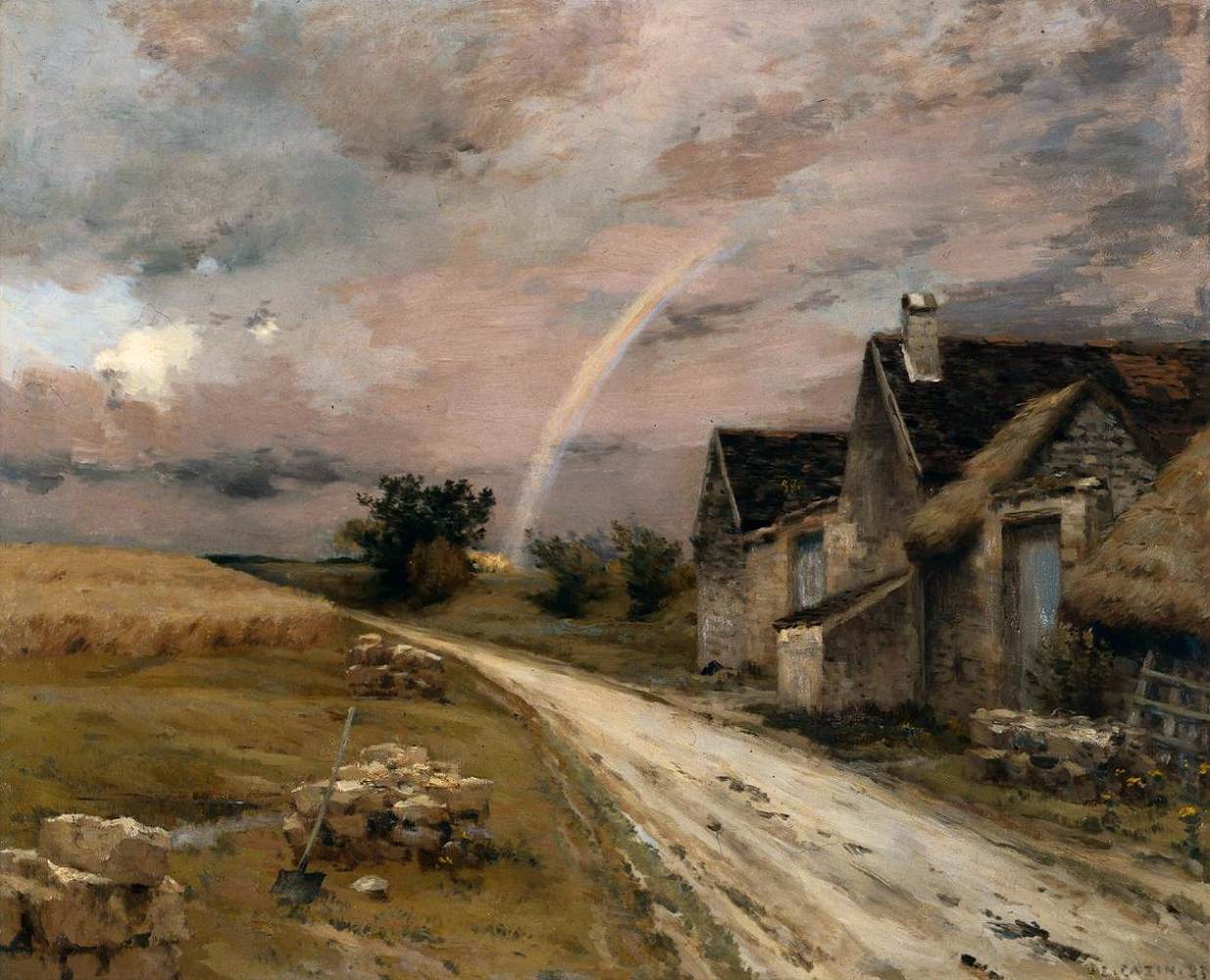Description
The Rainbow painting by Jean-Charles Cazin is an impressive work of art that stands out for its unique artistic style and carefully crafted composition. The work measures 87 x 106 cm and presents a country scene in which a young woman and a child meet under a rainbow.
Cazin's artistic style is characterized by his ability to combine impressionist and realistic techniques, allowing him to create a magical and dreamlike atmosphere in his works. In Rainbow, the artist uses soft, delicate brushstrokes to create a sense of movement and light in the scene.
The composition of the painting is another interesting aspect of the work. Cazin uses the technique of perspective to create a sense of depth in the scene, making the viewer feel immersed in the countryside. In addition, the position of the characters in the painting, under the rainbow, creates an impressive visual effect that captures the viewer's attention.
The use of color in Rainbow is another highlight of the work. Cazin uses a soft and delicate color palette to create a calm and serene atmosphere in the painting. The rainbow, in particular, is a key element in the work, as it brings a touch of color and magic to the scene.
The story behind the painting is also interesting. Rainbow was painted in 1890, during a period when Cazin was at the height of his career. The work was exhibited at the World's Fair in Paris in 1900 and was highly praised by critics.
In conclusion, Rainbow by Jean-Charles Cazin is an impressive work of art that stands out for its unique artistic style, carefully crafted composition, use of color, and interesting history. This painting is a showcase of the French artist's talent and creativity and remains a work of art admired by many to this day.

